Amusement Business June 1967
Posted By thecircusblog on January 10, 2010
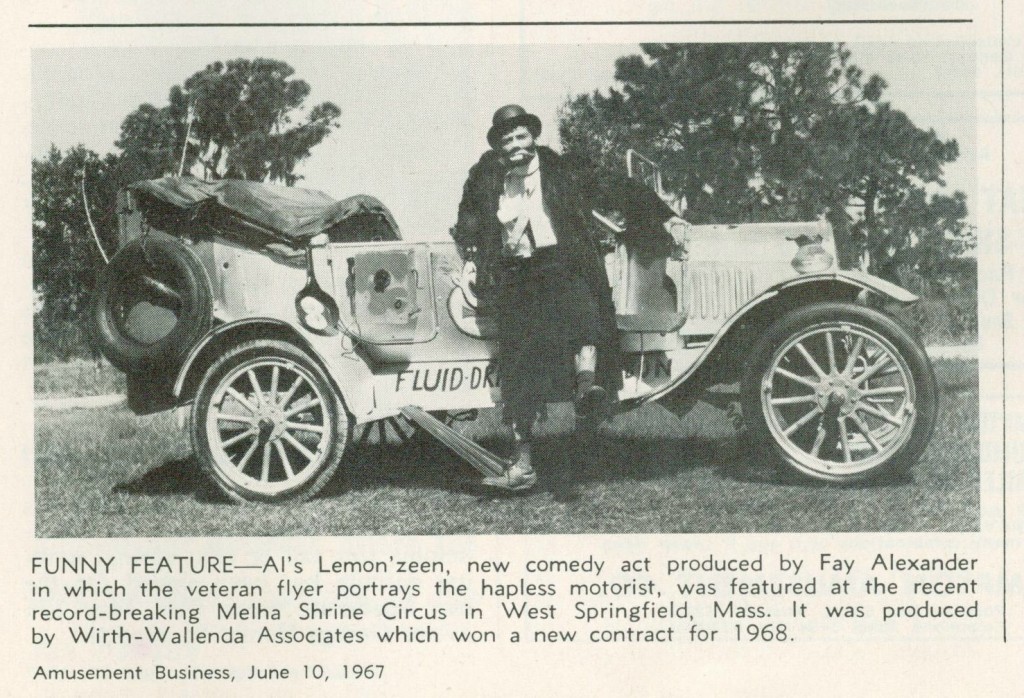 He loved show business and it loved him, What a great guy.
He loved show business and it loved him, What a great guy.
FAY ALEXANDER
Posted By thecircusblog on January 10, 2010
 He loved show business and it loved him, What a great guy.
He loved show business and it loved him, What a great guy.
FAY ALEXANDER
Posted By thecircusblog on January 9, 2010
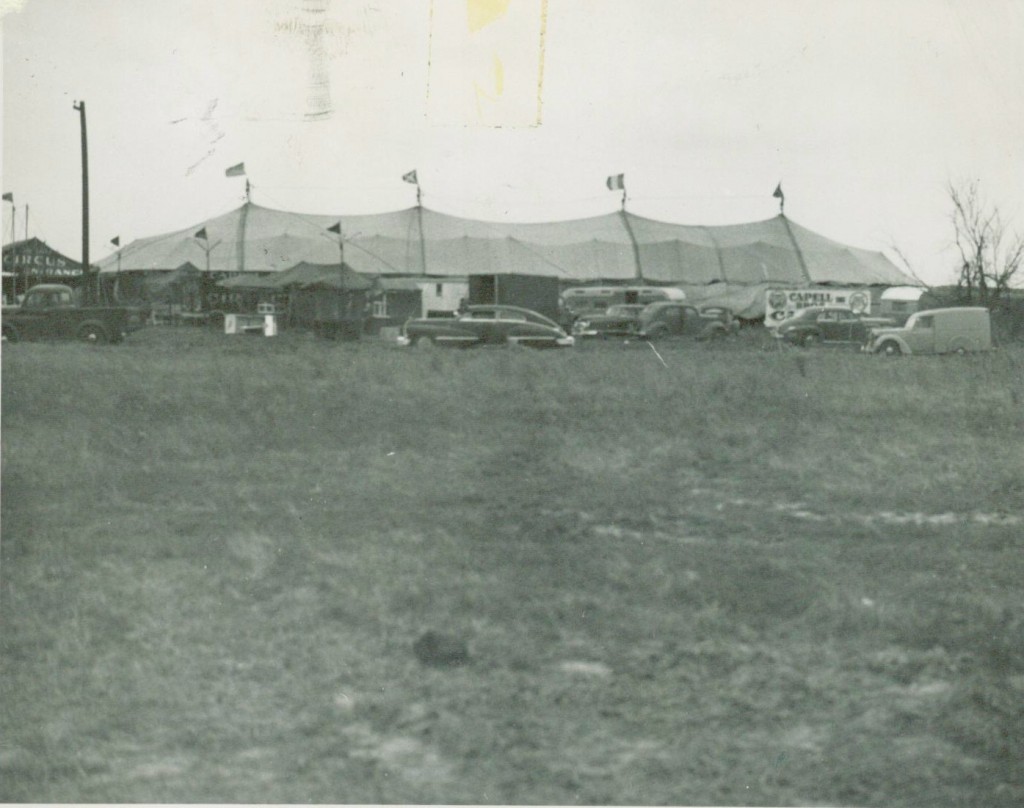 One of many great American circuses. Capell Bros in the early 1940’s.
One of many great American circuses. Capell Bros in the early 1940’s.
Posted By thecircusblog on January 9, 2010
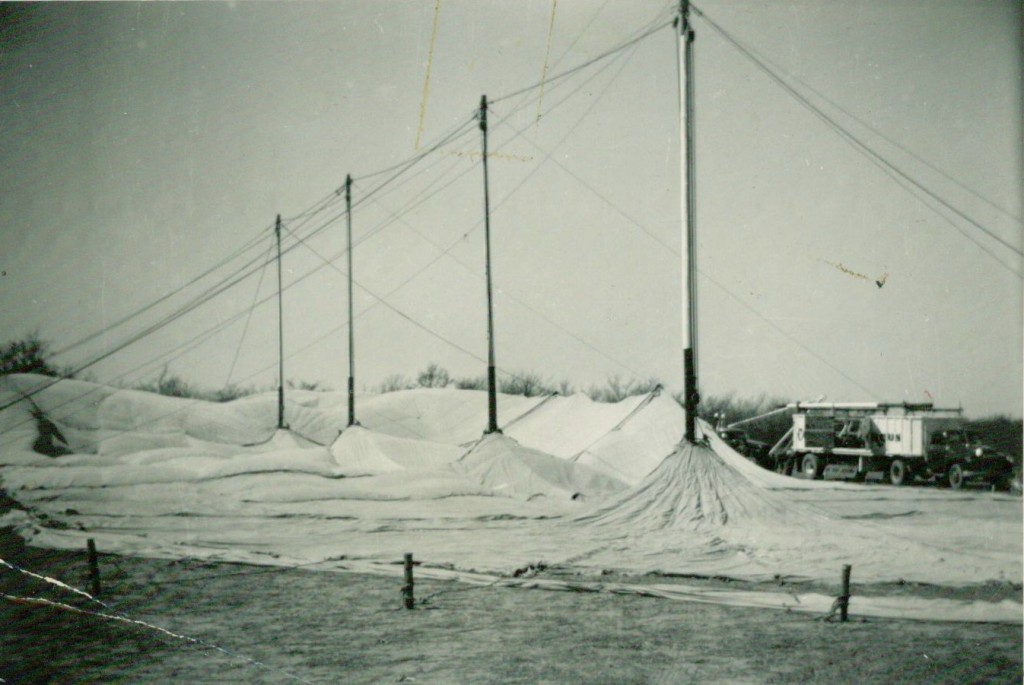
At the far end of the tent the men are putting in the side poles. There is a certain way to do this if it’s windy. We call it “saw bucking” …… we crisscross the side poles like an X. This helps to stabilize the canvas as the peaks are pulled up. They completely go around the tent placing the side poles and then pulling the peaks one at a time.
Posted By thecircusblog on January 9, 2010
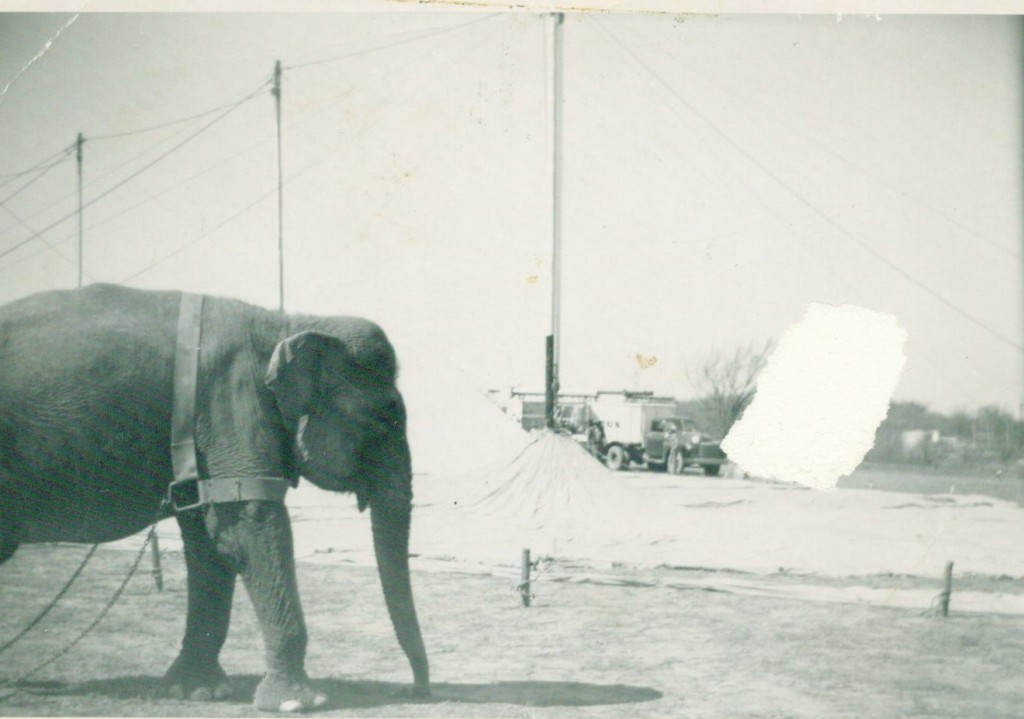
The harness is on Lucy and she will soon start pulling the peaks on the tent one at a time. At the bottom of each center pole is attached a mud block with a pulley rope going though and stretching under the canvas to the outside and then connects to the harness chain on the elephant. The tent is pulled up one pole at a time. The canvas is pulled up a certain distance each pull so it will not bind and tear. It is then it is tied off and onto the next pole until all of the circus tent is peaked to the top. This four pole tent allows it to have three rings……. thus comes the name “Three Ring Circus.”
Posted By thecircusblog on January 9, 2010
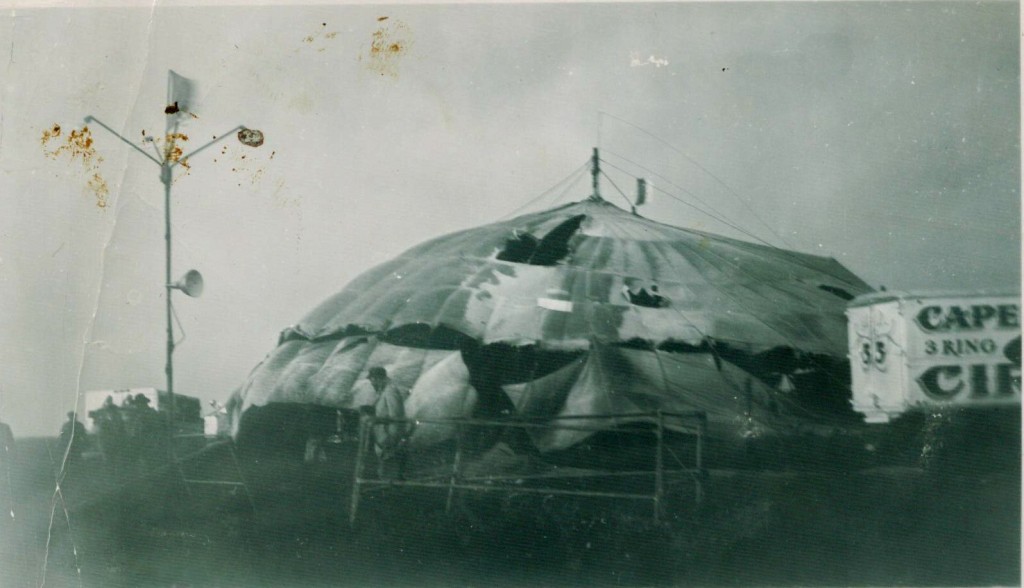
This is something that all circus people dread. A blow down. All you can is protect the people and the animals by getting them out of the tent. In this photo there are men tightening the bull cable which is a cable that holds the tent down, It is anchored in the ground at the front of the tent and runs to each center pole at the top of the tent, down the back and anchored deep in the ground.
Posted By thecircusblog on January 9, 2010
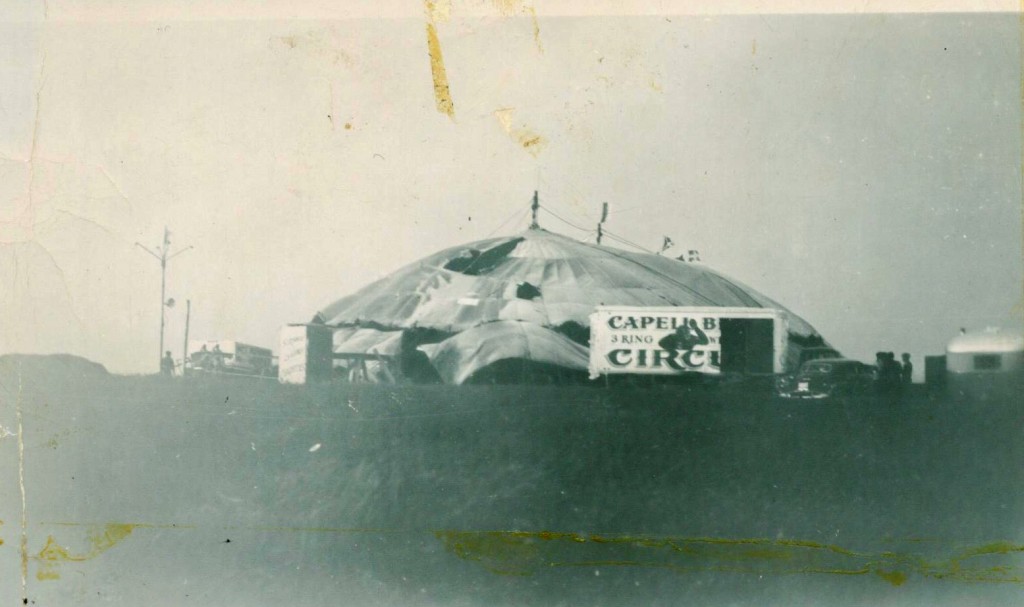
Sometimes, if you have enough warning you might be able to save a tent. The boss canvas man can drop the peeks of the tent getting it down far enough to keep it from too much wind damage………. if you’re lucky. Four men can drop the tent peaks simultaneously and quite fast. At the top of each pole there is a ring around the pole called a bail ring to which the tent canvas is lashed to this ring. The bail ring has a chain with pulley blocks attached to it. Strong manila rope runs though the blocks and down the center pole to a device called a pole pin, which is a steel bar that runs though a bore hole in center pole which is about waist high. This is where the rope is tied off. This rope holds the weight of this portion of the tent. There is a steel safety cable as well from the bail ring to to pin. Now the easy part, with a man on each center pole, they release the safety cable and slack off on the ropes allowing the tent to drop slowly. Each center pole has a minimum of 250 feet of rope. These pulley block ropes and bail rings are used to raise the tent. As you can see in the picture…sometimes there is not much time to do anything.
Posted By thecircusblog on January 9, 2010
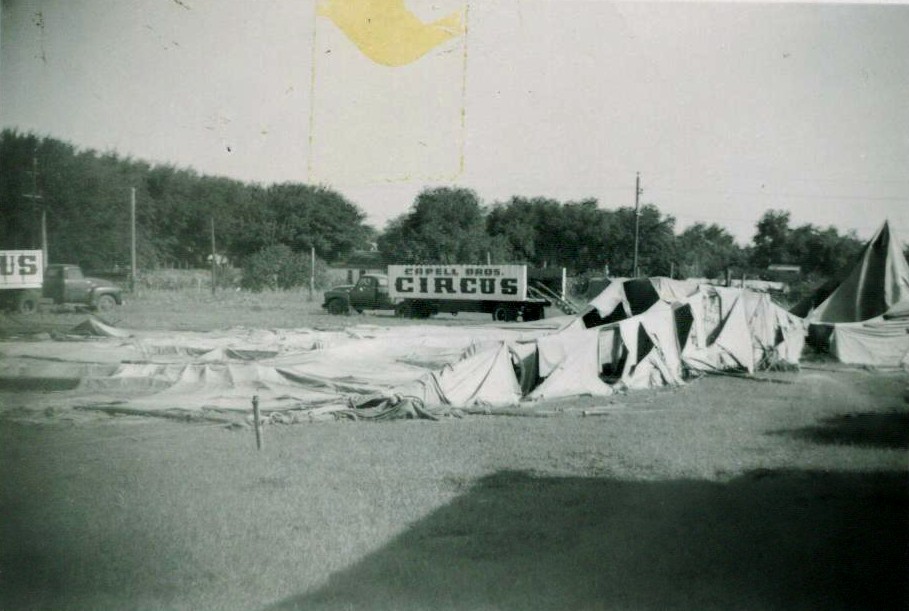
The storm is over and all you can do is get everyone on the canvas and start sewing and splicing broken ropes…. there is no time to waste. Hour after hour mending a tent until its done and strong enough to be put in the air. I still have my palm, canvas needles and bee wax. In 1977 Bill Capell rented a six pole big top to the Maricopa County Fair. The tent was used for exhibits. During the fair we had a wind storm, Luckily Bill and I were both there at the time and we dropped the peeks half way. The tent was saved but for one section which we replaced it that night….ready for the fair the fair the next day.